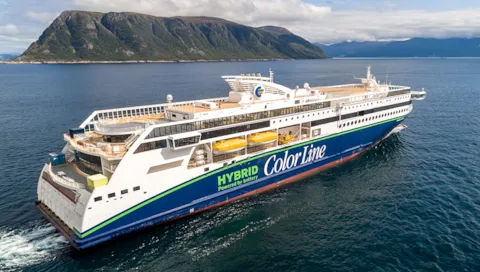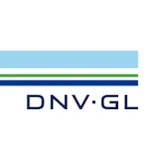Get regular ferry & RoRo insights!
Join thousands of industry leaders today who have already signed up to receive the latest insights.
sign up
The shipping industry and, in particular, the ferry segment have adopted battery and hybrid technology at a fast pace, approaching 400 vessels now in operation or under construction. Narve Mjøs looks at the drivers of this development and future prospects.


Narve is responsible for DNV GL’s battery-related services and projects in Maritime Advisory. He was project manager for battery ready services, for the 'Qualification of large battery systems for maritime applications' project producing a DNV GL Guideline for maritime battery systems, and is instrumental to the development of DNV GL’s battery service life model and DNV GL’s safety-, risk- and regulation-based model for battery-based systems. He is the programme sponsor for the recent Maritime battery safety joint development project producing a technical, scientific basis for requirement enhancements. Furthermore, Narve is Programme Director for the Green Shipping Programme – a public-private partnership programme with 63 participants and a goal to establish the world’s most efficient and environmentally friendly shipping. The programme has initiated 26 pilot projects. In many of these a battery system is a key component.
In the last few years we have really seen lithium-ion batteries take off in shipping. What are the reasons for this surge?

There are a few major reasons, but perhaps the biggest one is the massive drop in price. Developments in the automotive industry have driven the technology and the scale of production. As a result, cell prices declined from 1,160 to 176 US dollars per kilowatt-hour (kWh) over the period from 2010 to 2018, and further drops are predicted. Maritime battery systems will normally cost in the range of 600-1000 $/kWh depending on chemistry, exclusive of integration costs. While maritime battery systems are different from those used in cars, requiring a different battery management system, higher power and energy delivery and greater longevity, the battery cells are essentially the same and we are benefiting from this trend. In addition, there are new regulations requiring low-emission or emission-free operation in some regions. Norwegian ports and fjords have very much moved into focus, and electric or hybrid operation is now almost the default choice for new ferries in some regions. With the charging infrastructure steadily improving, batteries are set to become an even more attractive choice.

Why are so many owners looking at batteries? What are the big benefits of using a battery, or of full electric operation?

Firstly, of course, batteries are one of very few available options for shipping to operate entirely without emissions, at least for shorter distances. For a fully electric vessel, such as the DNV GL-classed Future of The Fjords, if the electricity comes from a zero-carbon renewable source such as hydropower, wind or photovoltaics, the overall emissions to the air, including green-house gasses, are nil. This makes electric vessels a great option for operation in sensitive environments. Batteries are also a prime enabler for reducing fuel consumption and maintenance costs. What is more, electric power minimizes noise and vibration while enhancing vessel responsiveness and thereby safety.

Are there any trade-offs?

The initial outlay is normally higher, as the investment in the battery and power system and the additional charging infrastructure required can be expensive. But on the plus side, both the energy source and maintenance costs tend to be lower for electric and hybrid vessels. An electric motor is much less complex than a combustion engine and a lot cleaner to run. Depending on the oil and electricity price, operational costs are lower, as well. For example, the first big all-electric ferry in the world, Ampere, which has operated between the Norwegian ports of Lavik and Oppedal since 2015, saves 60 per cent on average in fuel costs while cutting CO2 emissions by 2,680 tonnes per year.

Which shipping segments can make the most of batteries? And is the technology suitable for all ship types?

At the moment, batteries are most common in the car and passenger ferry segment, followed by offshore vessels, cruise ships and fishing vessels. Batteries have also been installed on tugs. The technology is really spreading quite quickly. We are also beginning to see deep-sea vessels using batteries to optimize their power management, both in terms of propulsion and auxiliary power use, to save fuel and reduce maintenance costs. Plug-in hybrid solutions, like Color Line’s recently commissioned Color Hybrid, which enable emission-free port sailing using batteries, will also become more common and will be used increasingly for longer distances as battery prices continue to drop. On larger ships batteries allow on-board generator sets to be optimized in several ways: The number of gen sets can be reduced in many cases while the existing ones are better utilized and can operate at optimum rather than peak loads, which reduces fuel consumption. Batteries can store energy harvested from waste heat recovery, regenerative braking of cranes and renewable energy sources (such as wind or solar power). In addition, they can optimize propulsion systems using LNG and other eco-friendly fuels, and enhance the performance of emission abatement technologies.

Looking ahead what do you see coming up on the horizon for batteries in shipping?

I think we will increasingly see batteries in hybrid power systems, especially in the ferry and short-sea segments. There will also be a more gradual, but increasing trend to incorporate batteries in larger vessels – most likely as a plug-in option for emission-free port sailing and in-port operation. For example, it was just announced that in 2020 the AIDAperla will have a battery pack installed that is capable of delivering 10 MWh. Charging will be possible using either shore power or peak load shaving at sea. In the medium-to-longer term we might start to see new types of batteries emerge alongside Li-ion. As the development of alternative chemistries such as Li-air or Li-sulphur, which feature superior energy density, or Mg-ion or Al-ion, which could be more cost competitive, or even graphene, which could bend both the cost and efficiency curves, continues, these technologies may find their way into the maritime and offshore industry eventually. In the shipping world, where high performance, greater safety and reduced degradation (lifetime) are important factors, lithium–titanate batteries (LTO) could be attractive although they are much more expensive. Finally, we could also see solid-state electrolyte systems break through into the market. But for the time being none of these technologies are ready for mass production, and once they are they will face the challenge of scaling-up production to industrial volumes. We can rest assured, however, that batteries, whether in hybrid or purely electric configurations, are a trend that will grow stronger over the next few years, and I am confident that the pace of uptake will increase significantly because the advantages are so compelling in relation to the cost.

Join thousands of industry leaders today who have already signed up to receive the latest insights.
sign up